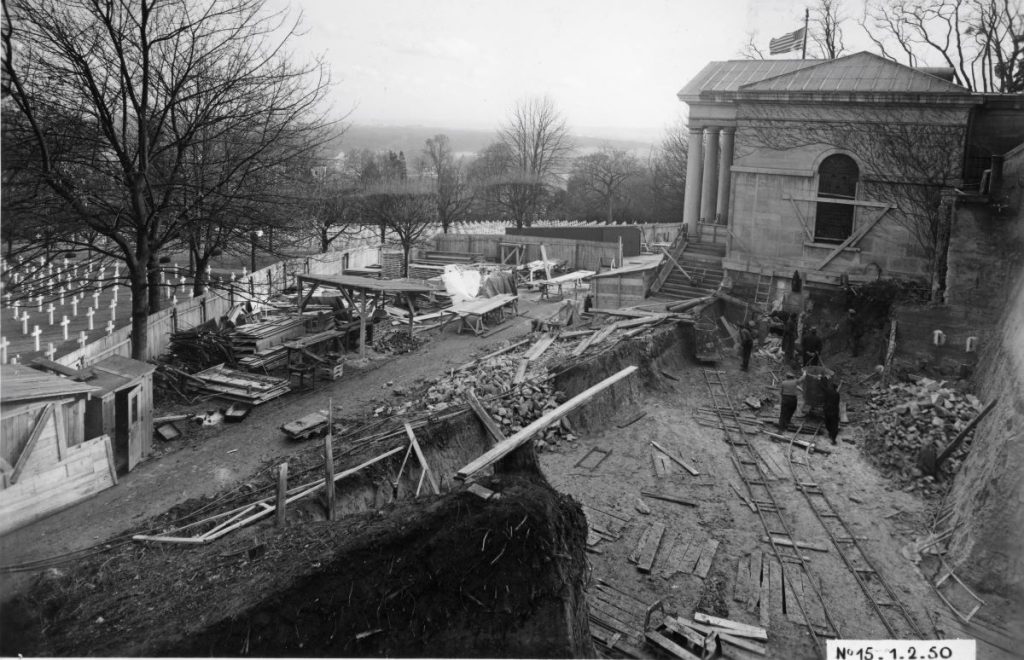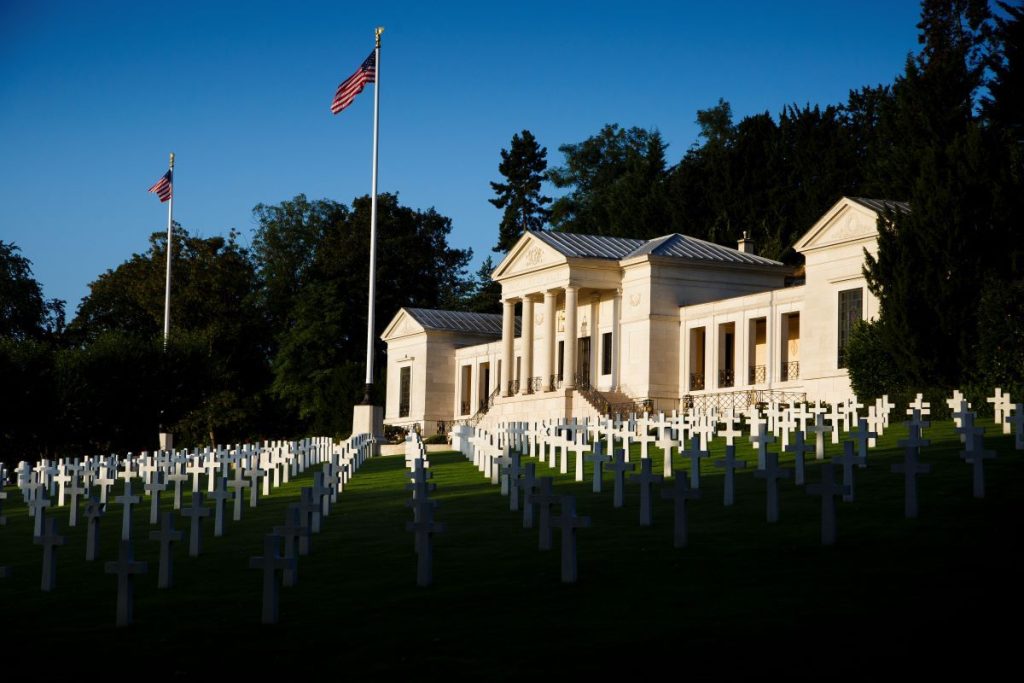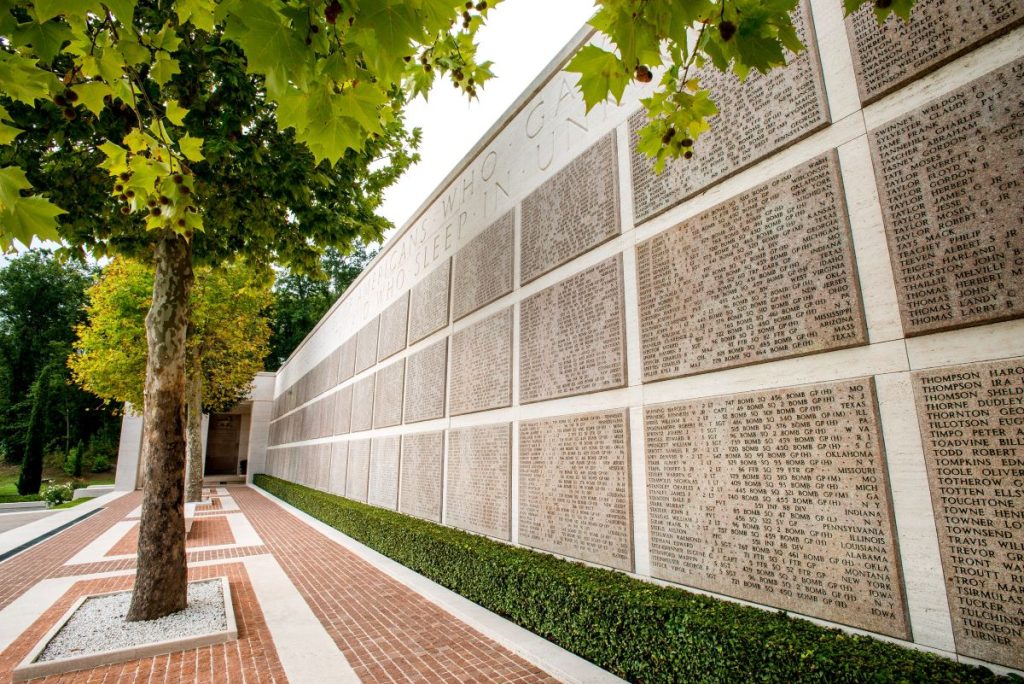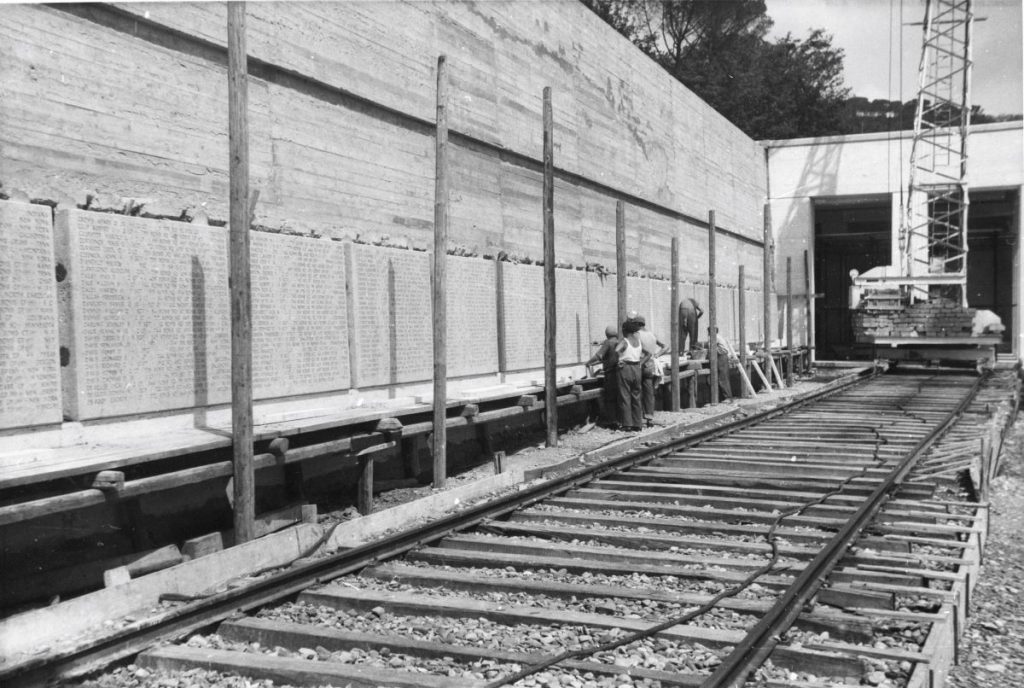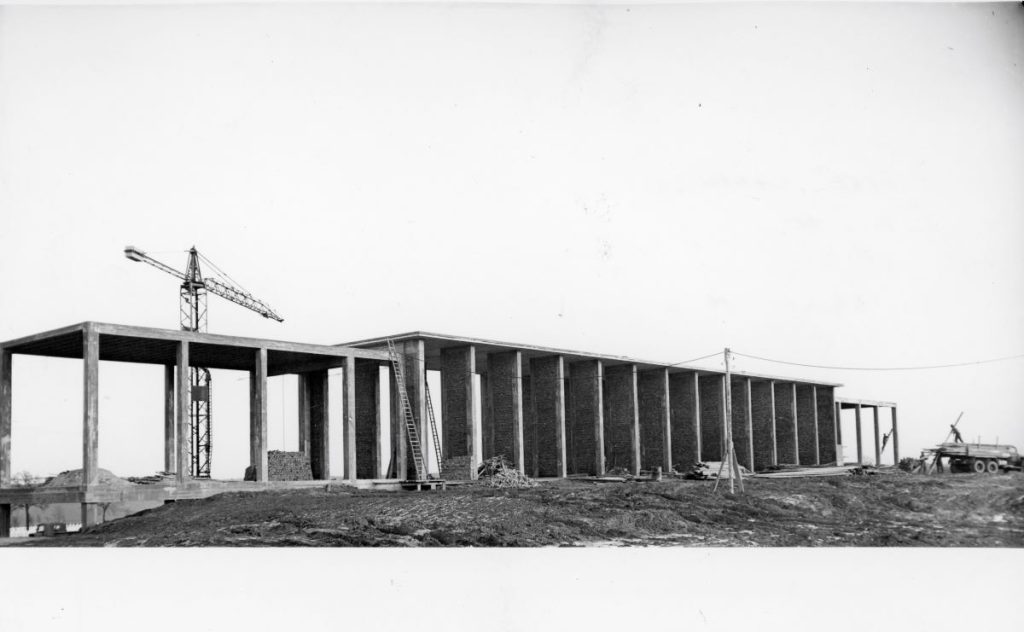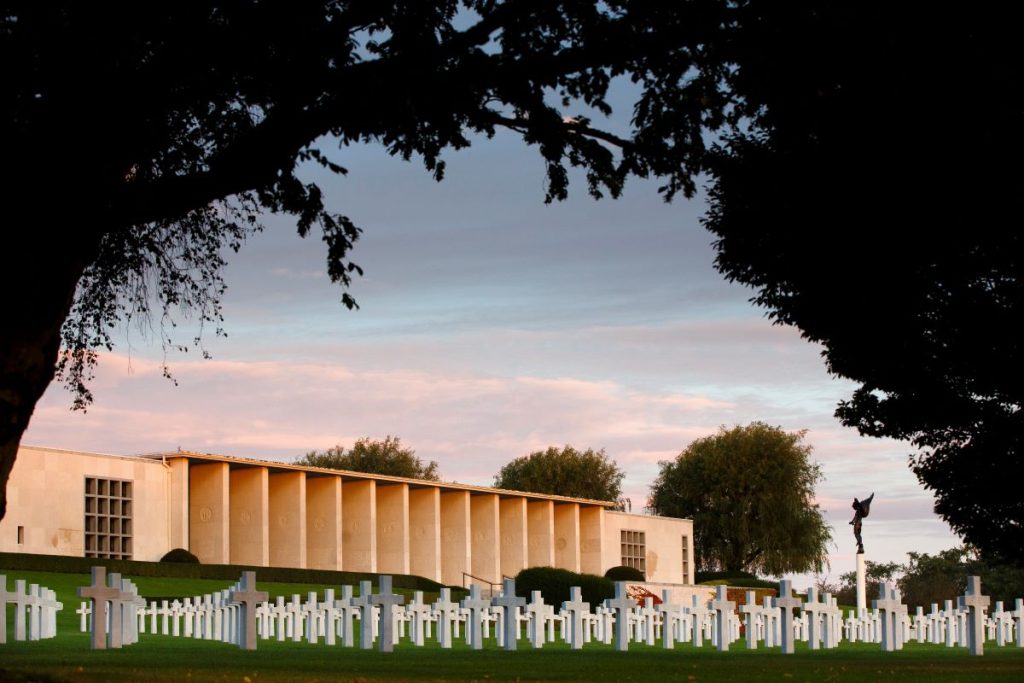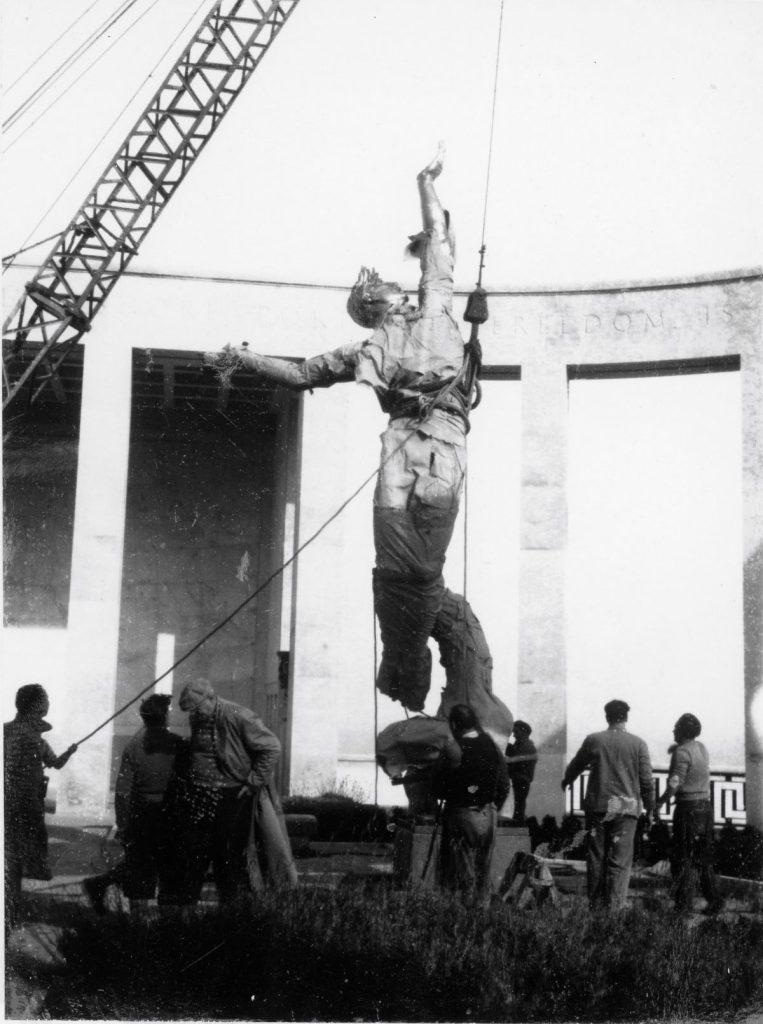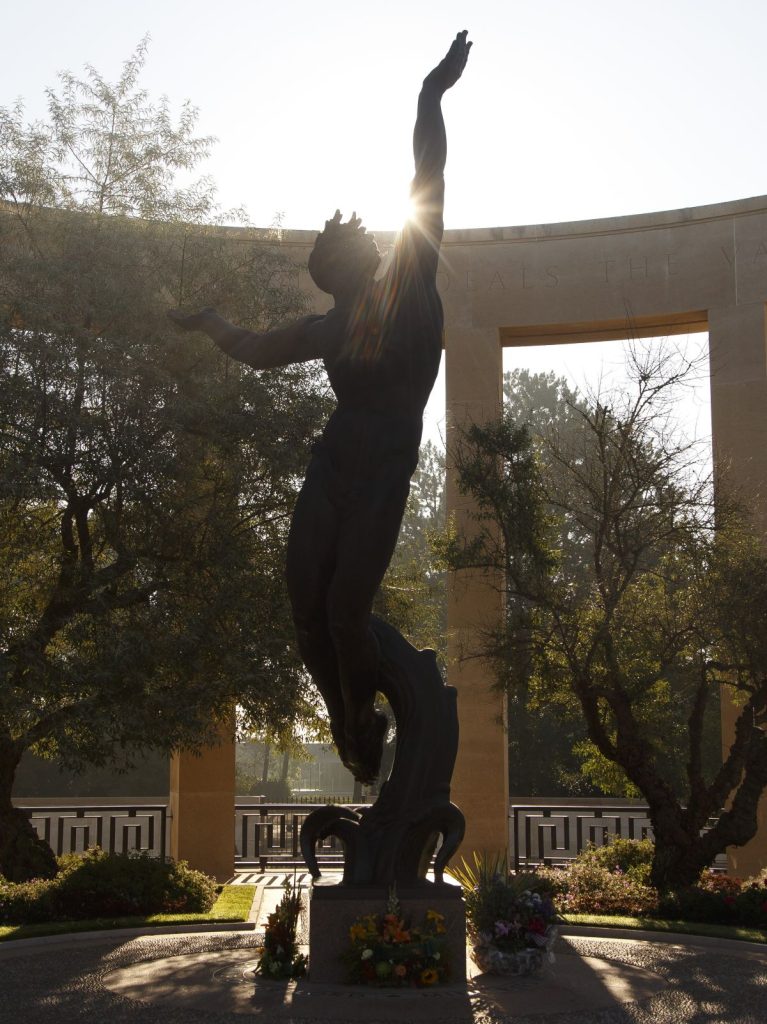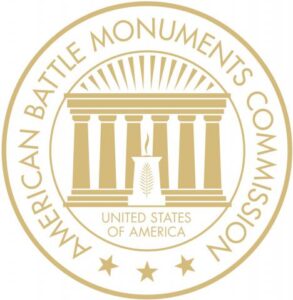Victory in Europe Day sparked widespread celebrations and relief across Allied nations after the almost six years of World War II. On May 8, 1945, Germany unconditionally surrendered.
As the Germans were pushed back throughout the beginning of year, the Allies moved in celebrating victories and mourning their losses. Throughout the war, the War Department had already been collecting, identifying and burying the dead in temporary cemeteries. The U.S. began to turn its thoughts to permanent cemeteries and memorialization. For the American Battle Monuments Commission, this meant returning U.S. staff to its sites in Europe and looking ahead to a World War II commemorative program. The agency’s mandate was formalized in March 1946 with an executive order from President Harry S. Truman.
A precedent set
After World War I, a movement by veterans, military units and other organizations resulted in a wide range of memorials hastily—and sometimes poorly—constructed and scattered across Europe. Often the construction was done on ground not properly acquired or coordinated with the host nation. Many of the markers were not built to withstand time, and no plans were in place for their upkeep.
In 1921, the War Department addressed these issues with policy recommendations and the creation of the Battle Monuments Board. In 1923 the responsibility for creating a unified program for battle monuments across European battlefields was turned over to the newly created ABMC.
“One of the guiding principles from the very beginning was to restrict the number of monuments,” said ABMC Historian Ben Brands, citing lessons learned after the U.S. Civil War where battlefields, such as Gettysburg, were overcome with monuments. “There was no real kind of plan, there were no standards. And so, we really wanted to have a centralized plan for monuments.”
After the Great War, ABMC created 11 monuments and two markers in Europe to commemorate those who gave their lives in service to their nation. It also assumed responsibility for the seven World War I cemeteries in Europe.
Continuing the mission
After World War II, the United States government wanted to avoid the issues it had after World War I with the creation of individual monuments and markers. Even before V-E Day, ABMC’s Paris office was re-opened, and American employees began returning to ABMC sites that had been cared for by local caretakers during the war.
The secretaries of the War Department and Department of the Navy wrote to Truman requesting ABMC be given the mission to direct the memorialization of World War II service members abroad. Truman issued the executive order and appointed Gen. Thomas North as the ABMC secretary.
ABMC along with the War Department shared responsibility for creation of the World War II sites.
The War Department oversaw the selection of cemetery sites and acquiring the land in coordination with ABMC. In his book, “War and Remembrance,” Thomas H. Conner outlined the guidelines the organizations used for site selection including using sites already set up as temporary cemeteries and using sites that had connections to military operations. Sites should be easily accessible, and their surroundings should be “pleasing” and free of natural hazards, such as flooding.
According to Conner, in 1947, 209 temporary cemeteries around the world held more than 240,000 known and more than 12,000 unknown service members. In Europe alone, 150,340 Americans were buried in 36 cemeteries in six European countries. Additionally, almost 20,000 service members were interred in known, isolated graves. The number and placement of permanent World War II cemeteries would be dependent on how many of those service members would remain interred overseas. In 1947 and 1948, the War Department contacted the families to see if they wanted their service members interred permanently overseas or interred in the U.S. in a military or private cemetery.
By mid-1948, 14 new cemetery sites were selected in Europe, Asia and Africa for the 90,000 who would remain interred overseas.
A new design to honor those lost
Besides the cemeteries, the World War I memorial program included the construction of large monuments to honor the battles and those who fought them. In contrast, due to the geographic extent and massive scale of the war, the World War II program did not include provisions for independent monuments. The cemeteries would incorporate both. Designs were approved by ABMC and the Commission on Fine Arts.
“It was determined not to do any major monuments for World War II as we had done at World War I,” Brands said. “Instead, the cemeteries themselves would serve as both cemeteries and monuments, and for that reason, the World War II cemeteries tend to have much more elaborate art and architecture than what we see in the simpler, although still beautiful, World War I cemeteries.”
Reburials at the 14 new sites were completed by mid-1951 and the War Department turned over full control to ABMC with the last handover at Ardennes in June 1951. As the War Department’s involvement ended, ABMC began placing permanent headstones, and constructing chapels, fountains, monuments, walls of the missing, battle maps, service areas and administration buildings at the sites as federal funding allowed.
Over the next years, ABMC’s chairman Gen. George C. Marshall and members of Congress fought for budgeting to keep construction going. One member of the House Appropriations Committee wrote about his disappointment in seeing families of the fallen visiting their loved ones’ graves at incomplete sites overseas.
The completion of ABMC’s 14 World War II cemeteries took almost 15 years. On Sept. 13, 1952, the first completed site was dedicated at Suresnes American Cemetery. The World War I cemetery outside of Paris was expanded to honor those from both world wars and to allow for the interment of 24 unknown service members from World War II.
Six new cemeteries were finished and dedicated in July 1956, with the other eight new sites dedicated in the last half of 1960.
Our promise: Time will not dim the glory of their deeds
Moving into its second century of operations, ABMC operates and maintains 26 permanent American cemeteries and 31 monuments and memorials in 17 countries including three memorials within the United States. ABMC sites are maintained in a “like new” status maintaining the historic integrity of the sites’ original artistic and horticultural designs to continue to honor those buried and memorialized at the pristine sites. Staff at each site research and share the stories of those buried and memorialized at their sites to keep their memories alive. In 2024, approximately three million visitors from around the world toured ABMC sites to honor the lives lost, pay tribute to the missing and learn about those who made the ultimate sacrifice in the name of freedom.
ABMC’s World War II cemeteries
Ardennes American Cemetery (Belgium)
Brittany American Cemetery (France)
Cambridge American Cemetery (England)
Epinal American Cemetery (France)
Florence American Cemetery (Italy)
Henri-Chapelle American Cemetery (Belgium)
Lorraine American Cemetery (France)
Luxembourg American Cemetery (Luxembourg)
Manila American Cemetery (Philippines)
Netherlands American Cemetery (Netherlands)
Normandy American Cemetery (France)
North Africa American Cemetery (Tunisia)
Rhone American Cemetery (France)
Sicily-Rome American Cemetery (Italy)
Suresnes American Cemetery (France, Commemorates WWI and WWII burials)
 An official website of the United States government. Here's how you know.
An official website of the United States government. Here's how you know. 